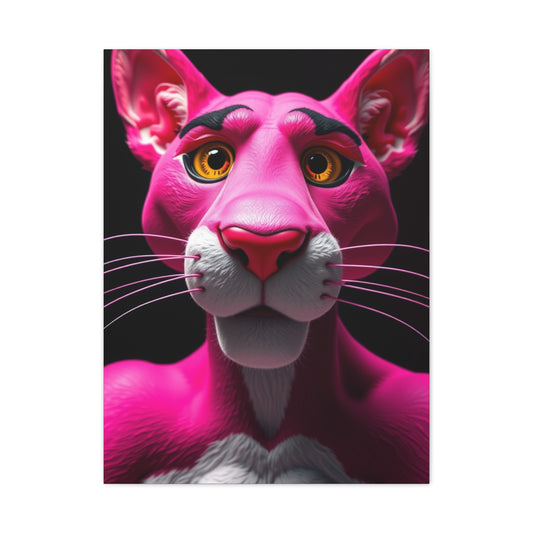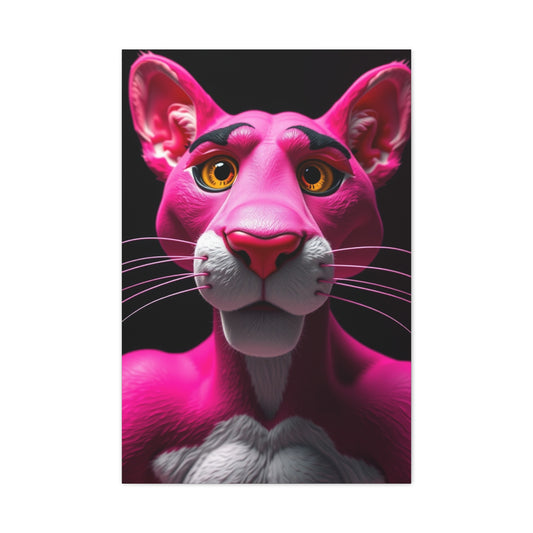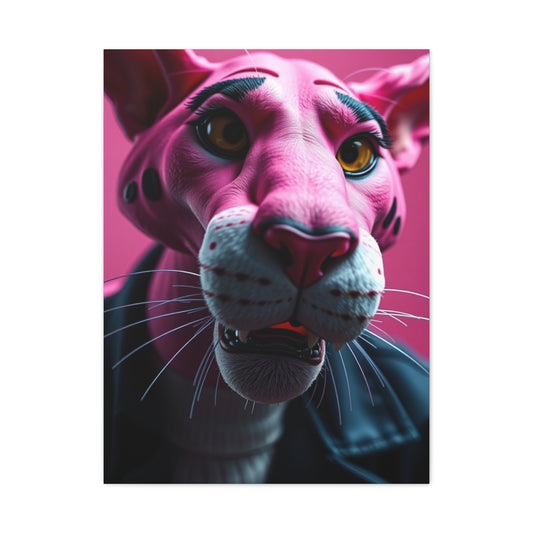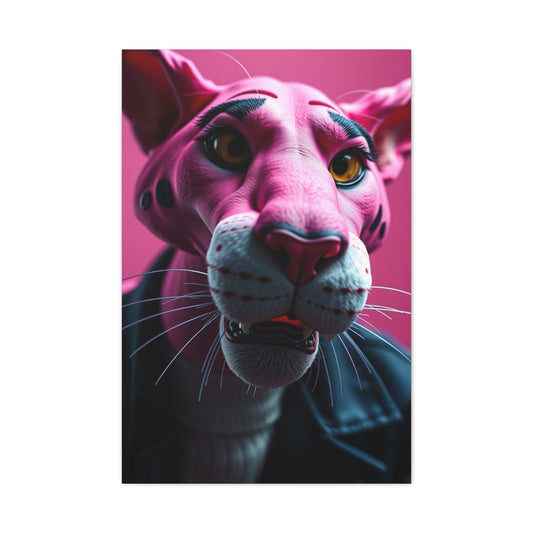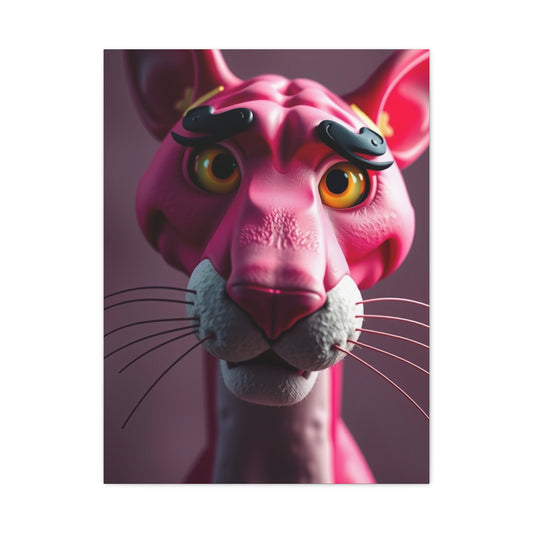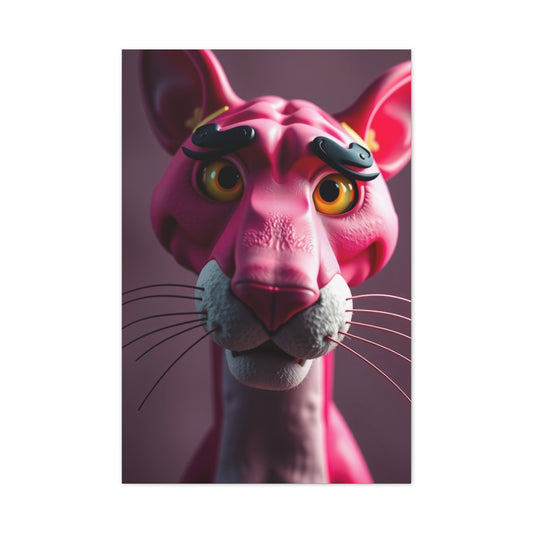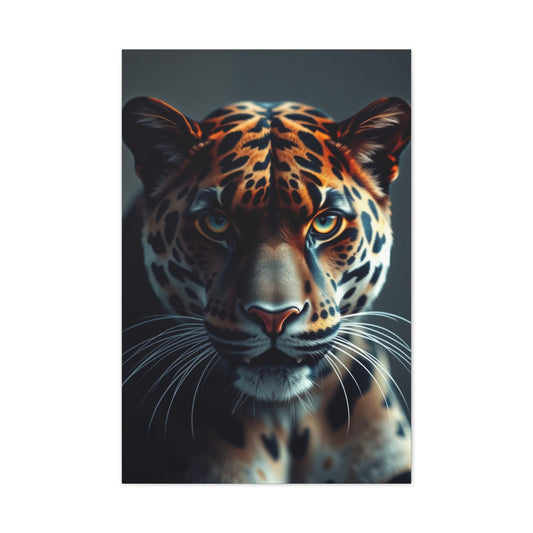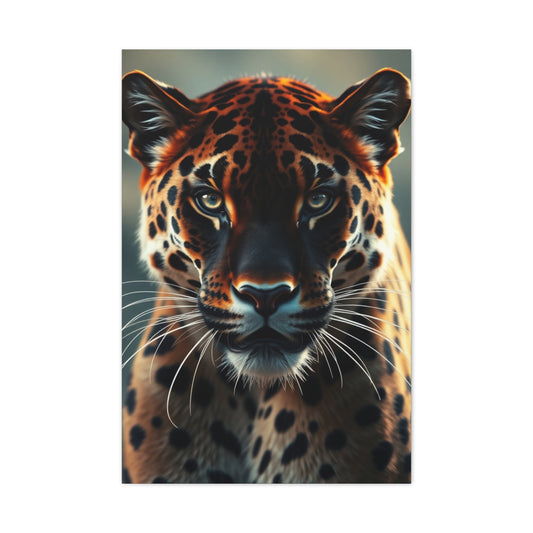The art of Diego Tirigall stands out immediately—a dynamic blend of neo-expressionism and bold street art influences that captivates with its gritty, multi-layered essence. His work offers an abstract reimagining of urban culture, where vibrant colors, textured layers, and compelling social commentary converge. Through his pieces, Diego shares a window into his vision of freedom, creativity, and rebellion. In this in-depth interview, we dive into Diego's artistic philosophy, his journey toward creative independence, and the powerful messages that define his work.
Meet the Visionary Artist: Diego Tirigall
Diego Tirigall is not just an artist; he is a creative force whose work reflects a relentless passion for artistic expression and exploration. A self-taught talent, Diego’s journey into the world of art is both unique and compelling, demonstrating how sheer determination and a deep connection to personal history can shape an extraordinary career.
Born and raised in Argentina, Diego’s exposure to art began in the most profound way possible—through his family. Raised in a household where art restoration was a part of everyday life, Diego grew up surrounded by the intricacies of preserving artworks, gaining an appreciation for the delicate balance between tradition and transformation. His father, an antiquarian, and his mother, an art restoration specialist, not only exposed Diego to the world of art from a young age but also taught him the value of understanding history and its preservation. This early immersion in art’s delicate processes laid the foundation for Diego’s unique approach to his own creative work.
Although Diego didn’t have formal training in fine arts, the absence of structured education didn’t hinder his artistic development. In fact, it became a driving force in his artistic evolution. Instead of following a prescribed path, Diego chose to explore, experiment, and create based on instinct and his genuine passion for the craft. This self-taught journey allowed him to build a style that is authentically his own—raw, expressive, and filled with an intensity that is immediately recognizable.
What sets Diego apart in the art world is his ability to seamlessly blend the gritty, rebellious essence of street art with the meticulousness of traditional art forms. The combination of these elements creates a body of work that is not only visually striking but also deeply conceptual. Each piece tells a story of freedom, rebellion, and personal expression, with Diego’s choice of mediums, textures, and techniques all contributing to the narrative.
A significant aspect of Diego’s work lies in his fearless approach to using materials. From reclaimed wood to found objects, Diego’s ability to breathe new life into discarded materials adds layers of meaning to his pieces. These materials are not simply used for their aesthetic qualities; they serve as metaphors for renewal, reimagining, and transformation—values that resonate deeply within the context of his artistic philosophy.
Diego’s art reflects his love for experimentation. He doesn’t limit himself to one style, material, or technique. Whether it’s the vibrant hues of Neo-Expressionism, the chaotic vibrancy of Street Art, or the tactile textures found in Art Brut, Diego’s work encompasses a wide range of influences. His adaptability is one of the key elements that makes his work feel dynamic and alive. Every piece is a reflection of his diverse influences, yet the essence of his personal vision remains unchanged.
Through his journey, Diego has managed to fuse the world of traditional fine art with the raw, energetic style of street art. His works are often bold and energetic, filled with spontaneous marks, drips of paint, and layers of textured surfaces that invite the viewer to engage on multiple levels. His use of color is another standout feature—vivid, often intense, and designed to evoke emotions. Each piece of Diego’s wall art offers something new for the observer to discover, from the deeper meanings hidden beneath the layers of paint to the intricate textures that make his work almost tangible.
One of the most striking elements of Diego's work is his ability to incorporate social commentary and contemporary themes into his pieces. Whether it’s through the exploration of the human condition, the role of technology, or the obsession with social media, Diego’s artwork offers a powerful commentary on the issues of today. His pieces invite the viewer to reflect on the state of the world while also challenging conventional ideas of what art can be.
In his move toward painting, Diego also embraced a more hands-on approach to art-making. Instead of relying solely on digital tools, he began to work directly with physical materials, a shift that allowed him to explore new dimensions of his creativity. The use of reclaimed materials in his artwork, for instance, is a direct reflection of his desire to work with his hands, to physically manipulate the materials, and to create something unique and meaningful from what was once discarded.
Beyond his creative process, Diego's approach to his art career has also been shaped by his commitment to helping other artists. He believes that art should not be limited to the few but should be accessible to all. Through his platform, ProMockup.com, he has created resources for other artists to showcase their work in realistic settings. By offering tools that enable artists to visualize their work in lifelike environments, Diego is making it easier for artists to present their creations in a way that maximizes their impact. This initiative is just one example of Diego’s commitment to fostering a sense of community within the art world.
As Diego’s career continues to evolve, one thing remains certain: his work will continue to challenge, inspire, and provoke thought. His fearless experimentation with materials, styles, and techniques, combined with his unwavering commitment to personal expression, ensures that his place in the contemporary art world is firmly secured. And as he embarks on new ventures, from sharing his creative process through YouTube to offering more tools for fellow artists, Diego’s impact on the art world will only continue to grow.
In conclusion, Diego Tirigall is more than just an artist; he is a storyteller, a creator, and a visionary who uses his art to explore freedom, self-expression, and the complexities of modern life. Through his work, he invites us all to reconsider the boundaries of art and to embrace the power of creative liberation. Diego’s art is a reminder that art is not just about aesthetics—it is a form of communication, a tool for personal and social transformation, and, above all, a means of freedom.
The Three Pillars of Inspiration: Diego Tirigall's Creative Philosophy
Diego Tirigall’s artistic journey is deeply intertwined with three foundational sources of inspiration that have shaped both his work and his approach to art. These elements—freedom, historical art movements, and the influence of iconic artists—serve as the driving forces behind his captivating, multi-dimensional pieces. By embracing these influences, Diego has created a distinct artistic identity that blends rebellion, social commentary, and a personal exploration of material and technique.
Freedom: The Heart of Diego’s Art
The first and most crucial source of inspiration for Diego is freedom. For him, art represents an unbounded space where he can explore, experiment, and express without constraints. "For me, art is all about freedom," Diego explains. "It’s about the ability to express myself without restrictions, to experiment with different techniques, materials, and ideas." This sentiment of freedom is not just philosophical; it manifests in every brushstroke, texture, and layer of Diego’s work. He continually challenges himself to step beyond established norms and conventions, allowing his creativity to flourish.
This need for unrestrained expression is especially reflected in his choice of materials. Diego often works with reclaimed wood, a material that, in itself, embodies a sense of freedom. He reimagines discarded objects, transforming them into dynamic works of art. "There’s a certain kind of liberation in reimagining something old and giving it new life," he notes. The reclaimed wood in his works symbolizes the transformation of the past into something fresh and full of potential. This artistic philosophy reflects Diego's desire to take elements of the past—be they materials or ideas—and liberate them, reinterpreting them within a contemporary context.
In his work, freedom extends beyond the medium; it influences his exploration of different artistic techniques. Diego constantly experiments with varying levels of abstraction, from the chaotic and spontaneous marks of street art to the refined textures of more traditional fine art. His fearlessness in experimentation, combined with the material choices that allow for both permanence and impermanence, gives his artwork a dynamic, ever-evolving quality. By allowing himself the freedom to work outside of strict boundaries, Diego gives his art an emotional depth that resonates with viewers on multiple levels.
Historical Art Movements: Rebellion and Individuality
The second pillar that drives Diego’s creativity is his deep connection to pivotal periods in art history. For him, art history is not just a backdrop to his work but a powerful influence that informs his style and worldview. Diego cites three major art movements—Street Art, Neo-Expressionism, and Art Brut—as the genres that most significantly shape his creative direction.
Each of these movements reflects Diego’s belief in rebellion, individualism, and defiance against societal expectations. Street Art, with its raw, unpolished aesthetic, challenges traditional art spaces and questions the established norms of artistic value. As an art form often born from subversive culture, Street Art's inherent defiance speaks to Diego’s own rebellious spirit. "I see these movements as a celebration of human expression and defiance," Diego states. Street Art’s irreverence and urgency are reflected in his work, where Diego often plays with chaotic brushwork and vibrant color palettes to elicit emotional responses from his viewers.
Neo-Expressionism, on the other hand, offers a bridge between abstract and figurative art, inviting Diego to explore raw emotional expression through the use of intense colors and bold forms. Neo-Expressionism’s focus on emotion over form allows Diego to channel complex feelings and personal narratives into his work. Like the artists who pioneered this movement, Diego uses abstraction as a tool to communicate visceral experiences. This emotional intensity, paired with the abstract forms, allows him to convey a sense of internal struggle and liberation that resonates with contemporary audiences.
Art Brut, or "raw art," is another critical influence. This movement is defined by its unrefined aesthetic, often created by self-taught artists who embrace the freedom to create without formal constraints. Diego connects deeply with this style, as it embodies his own journey as a self-taught artist. By rejecting the formalities of art education and embracing a more intuitive approach to creation, Diego’s work mirrors the ethos of Art Brut. Through these genres, Diego crafts a unique voice that combines the emotional and rebellious qualities of both the past and present.
Influential Artists: Shaping Diego's Vision
In addition to historical art movements, Diego’s creative vision has been profoundly shaped by several iconic artists. He draws inspiration from both classical and contemporary figures, whose innovative approaches to art have guided his own practice. Diego credits artists like Andy Warhol, Robert Rauschenberg, Keith Haring, and Jean-Michel Basquiat as key influences, as they each transformed the art world with their bold ideas and experimental approaches.
Andy Warhol’s mastery of mass production and the appropriation of popular culture informs Diego’s fascination with social commentary and the juxtaposition of consumerism and art. Warhol’s use of repetition and his ability to elevate everyday objects into high art parallel Diego’s interest in reimagining the ordinary, such as his use of reclaimed materials in his pieces. Through Warhol, Diego learned how art can become a reflection of society, simultaneously criticizing and celebrating contemporary life.
Robert Rauschenberg’s pioneering work in mixed media and the fusion of painting with found objects deeply resonates with Diego’s own approach to creating tactile, layered artwork. Rauschenberg’s ability to combine seemingly disparate elements into cohesive, thought-provoking compositions is a technique Diego frequently employs. Just as Rauschenberg pushed boundaries by integrating everyday items into his art, Diego uses materials like reclaimed wood and industrial textures to ground his work in the everyday experience while also elevating them to the status of fine art.
Keith Haring’s bold use of line and his unflinching commitment to addressing social issues within his work resonate deeply with Diego’s commitment to social commentary. Haring’s work, with its vivid color schemes and simplified imagery, often carried messages about human rights, politics, and social justice. Diego similarly channels the urgency of contemporary issues, using his art to explore topics like addiction, technology, and the human condition, and inviting viewers to confront these subjects head-on.
Jean-Michel Basquiat, a fellow artist with roots in both graffiti and fine art, offers another major influence on Diego’s work. Basquiat’s raw, emotive art, often filled with fragmented text and aggressive brushstrokes, inspired Diego to embrace a similar approach to visual storytelling. Like Basquiat, Diego’s work is not confined to one medium or technique; it speaks to the unfiltered emotions and chaotic beauty of the world around him. The influence of Basquiat is evident in Diego’s layered works, where colors, textures, and symbols collide to create art that is both visceral and intellectually stimulating.
In addition to these historical and contemporary figures, Diego is inspired by street artists such as Kaws, Banksy, and Shepard Fairey. These artists continue to push the boundaries of what art can be by taking their work beyond traditional gallery spaces and integrating it into the fabric of public life. Banksy’s provocative social messages and Fairey’s fusion of graphic design and art have inspired Diego to consider how his work can communicate with a wider audience and challenge societal norms.
The Integration of Inspiration in Diego’s Art
By drawing on freedom, historical art movements, and influential artists, Diego has cultivated a distinctive approach to his work that is both deeply personal and universally relatable. His art is a reflection of the ongoing dialogue between the past and the present, between rebellion and tradition. Through his use of reclaimed materials, his exploration of abstract and figurative forms, and his commitment to addressing contemporary social issues, Diego continues to push the boundaries of what art can be. Each piece serves as a testament to the power of creativity and the endless possibilities of artistic expression.
Diego’s work stands as a celebration of individuality, freedom, and rebellion against the constraints of the conventional art world. By embracing these three pillars of inspiration, he creates art that is not only visually captivating but also emotionally and intellectually resonant, ensuring that his legacy will continue to inspire future generations of artists.
A Path to Artistic Independence: Diego Tirigall’s Creative Evolution
Diego Tirigall’s journey to becoming an independent artist is one of self-discovery, creative rebellion, and a constant drive for artistic freedom. From a young age, Diego was immersed in the world of art restoration, a field that deeply influenced his approach to creativity. His family’s involvement in the preservation of art not only shaped his aesthetic sensibilities but also instilled in him a respect for the delicate relationship between the past and present. This early exposure laid the groundwork for a lifelong passion that would eventually lead Diego to break free from conventional career paths and embrace the creative freedom of being a self-sustained artist.
From Art Restoration to Digital Design
Diego’s immersion in art started within the family home. His mother, an art restoration specialist, and his father, an antiquarian, gave Diego a front-row seat to the intricate process of art preservation. As a child, he fondly recalls spending time with his parents while they worked on restoring paintings and sculptures that his father had uncovered in various archaeological digs. These experiences shaped Diego’s early understanding of the value of art—not just for its aesthetic beauty but for its historical significance. The careful, meticulous process of restoration, where every stroke and detail matters, left a lasting impression on Diego and deeply influenced the way he would approach his own work in the future.
However, while Diego had an early foundation in the traditional aspects of art, he found himself drawn to the emerging world of digital design. After completing his early education, he spent over two decades refining his skills in graphic design and 3D motion graphics. During this time, he worked within the framework of agency life, creating designs and digital content for a wide range of clients. While Diego appreciated the technical skills he was acquiring, he began to feel stifled by the constraints of corporate life. Despite managing teams and working on high-profile projects, Diego realized that his true passion lay in creating art on his own terms, free from the boundaries of client expectations and corporate restrictions.
The Turning Point: From Digital to Physical Art
The tipping point came when Diego decided to take a risk and share his artwork online. Until then, his art had been largely confined to the digital space, with graphic design and 3D motion graphics offering a platform for his creative expression. Yet, Diego longed for more—a deeper, more personal connection with his work. He wanted to step away from the structured, client-driven world of digital design and embrace the freedom that physical art could offer. “I had a steady career managing teams, but I started to feel trapped in the corporate world,” Diego recalls. “It wasn’t until I began to share my artwork online that I realized what it meant to truly be in control of my own creative destiny. For the first time, I was able to earn money on my terms, doing what I loved.”
This pivotal moment marked the beginning of Diego’s transition from digital work to physical art. The decision to step away from the corporate world and embrace his artistic independence was not easy, but it proved to be a defining moment in his career. For the first time in his life, Diego was able to explore art in its purest form, free from the constraints of digital tools and the expectations of clients. He took the plunge into the realm of traditional painting, where he could experiment with materials, textures, and techniques without limitation. This newfound freedom enabled Diego to create art that was deeply personal, powerful, and unrestrained by external forces.
As Diego made this transition, he began to showcase his work on his website, diegotirigall.com, allowing him to share his original paintings with a global audience. Through his website, he connected with art lovers, collectors, and other creatives from around the world, expanding his reach beyond the confines of traditional galleries. The positive response to his work further reinforced his decision to pursue painting full-time, and he quickly gained recognition in the art world. Yet, despite his success in the traditional art scene, Diego remained committed to maintaining his digital roots. His exploration of digital art is far from over, as he continues to experiment with new digital mediums alongside his physical work, ensuring his creative exploration remains diverse and cutting-edge.
Creative Exploration and Experimentation
One of the hallmarks of Diego’s artistic evolution is his commitment to experimentation. Throughout his career, he has continuously pushed the boundaries of what is possible in art, blending traditional techniques with modern technologies and materials. Diego’s signature style combines the vibrancy and chaos of street art with the structure and refinement of fine art, creating a unique fusion that sets him apart in the contemporary art scene. He is not afraid to explore new techniques or challenge the status quo, and this fearlessness is what drives his creative process.
Diego’s artistic journey has also led him to embrace digital art, ensuring that his creative practice is constantly evolving. While his physical art continues to be the cornerstone of his career, Diego frequently explores digital tools and techniques, incorporating them into his creative process. His ability to blend the worlds of digital and physical art speaks to his versatility as an artist and his unwavering commitment to pushing the boundaries of creative expression.
Building a Legacy in the Art World
Today, Diego is thriving as a full-time painter, having successfully transitioned from digital design to traditional fine art. His work is highly sought after, with collectors and art enthusiasts recognizing the authenticity and depth of his creations. However, Diego’s journey is far from over. He continues to challenge himself, explore new mediums, and create art that reflects his evolving creative vision. As his website continues to serve as a platform for showcasing his work, Diego also plans to expand his reach even further, using digital tools to engage with a wider audience and share his creative process with other aspiring artists.
Diego’s story is a testament to the power of artistic independence and the importance of staying true to one’s creative vision. By embracing his passion for art and stepping away from the corporate world, Diego has not only found success but has also redefined what it means to be an artist in the modern age. Through his work, Diego proves that art is not just about creating something beautiful—it is about pushing boundaries, challenging conventions, and staying true to one’s unique perspective.
In conclusion, Diego Tirigall’s artistic path is a powerful reminder of the importance of creative freedom and the value of staying true to one’s artistic instincts. His evolution from digital design to traditional painting exemplifies the idea that art is not confined to one medium or form but is a limitless space for exploration and innovation. As Diego continues to evolve and grow as an artist, his work will undoubtedly inspire future generations to embrace their own creative independence and follow their passions without hesitation.
Diego’s Artistic Favorites: Works That Reflect Contemporary Society
Diego Tirigall’s work is a vivid tapestry of social commentary, bold expressionism, and deep philosophical inquiry. As a passionate admirer of Neo-Expressionism, Diego channels the essence of this art movement, using it as a tool to delve into complex issues such as the impact of technology, consumer culture, and the emotional weight of modern life. His body of work is a powerful blend of abstraction and commentary, each piece acting as a mirror reflecting the challenges and paradoxes of the world we inhabit today.
One of the central pillars of Diego's art is the ability to weave a deeply personal narrative while engaging with the broader social issues of the time. This ability to combine abstract expressionism with sharp social critique gives his work a distinct, multifaceted quality, making it both visually striking and intellectually provocative.
“Gluttony Soup Preserves”: A Commentary on Modern Consumption
Among the pieces that Diego holds closest to his heart is “Gluttony Soup Preserves” from his "Unhealthy Preserves" series. This piece, a modern interpretation of Andy Warhol's iconic Campbell’s Soup can, goes far beyond mere homage to pop art. Diego's version uses the well-known imagery of the soup can to comment on the darker side of modern life—specifically, our society’s addiction to social media and technology.
“This piece is very close to my heart because it critiques the addictive nature of social media,” Diego explains. “It’s a commentary on the seven deadly sins, and how they are reflected in our growing addiction to platforms that dominate our daily lives. Social media has become a form of consumption, a kind of gluttony.”
Diego’s "Gluttony Soup Preserves" cleverly plays with the iconography of Warhol’s pop art while shifting the focus from the consumerist consumption of material goods to the insatiable consumption of online content. In the digital age, it’s no longer just about buying products, but about consuming information, likes, and digital status—filling a void that’s never truly satiated. Through this piece, Diego calls attention to the consequences of this unrelenting consumption, suggesting that, just like overindulgence in food, this obsession with technology and social media can lead to spiritual and psychological malnourishment.
This work is not only visually captivating with its bold colors and textures but also carries a powerful message about the darker aspects of modern digital culture. It forces the viewer to question how much of our personal identity is shaped by our digital consumption, and whether this addiction to online validation and constant information feeds is ultimately fulfilling or destructive.
“The Rubicon”: Artificial Intelligence and the Ethical Dilemma
Another key piece in Diego’s portfolio is “The Rubicon,” a work that tackles one of the most pressing issues of our time: artificial intelligence and its impact on society. As AI continues to advance at an unprecedented rate, Diego uses his art to examine both the promises and the potential risks associated with this technology.
“The Rubicon” is a thought-provoking exploration of artificial intelligence’s dual nature. On one hand, AI holds the promise of progress, revolutionizing industries from healthcare to transportation. On the other hand, it presents significant ethical dilemmas, such as the question of autonomy, surveillance, and the role of human agency in a future dominated by machines. Diego’s work captures the tension between these two realities—the utopian vision of AI and the dystopian fears it provokes.
With bold strokes and an intricate blend of abstraction and symbolic elements, Diego conveys the sense of complexity and uncertainty surrounding the development of AI. The piece speaks to the growing concerns that AI could not only disrupt economies but also challenge our very understanding of what it means to be human. The abstract forms in "The Rubicom" evoke a sense of both technological wonder and apprehension, making it clear that the future of AI is not simply a question of technological advancement, but also a matter of ethical and societal responsibility.
“Delete Zone”: The Influence of Technology on Human Identity
Another work by Diego that delves deeply into contemporary technological themes is “Delete Zone.” This piece takes a more critical look at the pervasive influence of technology on our daily lives, focusing specifically on how technology shapes our identities and human interactions. In an age where technology is deeply intertwined with every aspect of life—from the way we communicate to how we define success—Diego’s “Delete Zone” questions the role of technology in shaping who we are and how we relate to each other.
The title “Delete Zone” itself is a metaphor for the growing sense that technology, particularly social media and the internet, has the power to erase or redefine aspects of our lives. In this “zone,” personal identity becomes malleable, constantly edited, reshaped, and, at times, deleted in favor of a curated, digital persona. Through the use of texture, layering, and color, Diego visually represents the process of constant reinvention, as well as the emotional toll it can take on individuals who feel pressured to conform to digital ideals.
This piece highlights Diego’s concern with how technology, while enabling unprecedented connectivity, has also created a culture of isolation, anxiety, and self-doubt. The constant bombardment of information and the drive for digital approval are represented in the piece through chaotic yet deliberate brushstrokes, symbolizing the overwhelming nature of this new digital reality. It serves as a powerful reminder of the need to disconnect, reflect, and reclaim one’s identity outside of the confines of online spaces.
Reclaimed Wood Series: Transforming the Past into the Present
One of Diego’s most striking artistic signatures is his use of reclaimed materials, particularly wood. His reclaimed wood series showcases his ability to take discarded materials and transform them into thought-provoking, tactile works of art. For Diego, the use of reclaimed wood is not just about sustainability; it’s about symbolism. The process of reimagining something old and giving it a new life resonates with his broader philosophy of art as a medium for transformation and renewal.
One of the standout pieces in this series is “Inner Nature (Profile of Woman),” which exemplifies Diego’s skill in bringing texture and depth into his work. This particular piece, which has even been featured on a wine bottle in California, combines Diego’s love for texture with his exploration of the human form. The rawness of the reclaimed wood, juxtaposed with the delicate contours of the woman’s profile, speaks to the idea of the human condition—how, like the materials he works with, people can be transformed, repurposed, and renewed.
By using reclaimed wood, Diego imbues his pieces with a sense of history, memory, and legacy. These materials have lived previous lives, often carrying with them a narrative or significance that Diego draws upon and reinterprets. The textures, imperfections, and natural patterns in the wood become a metaphor for the complexities of the human experience—imperfect, yet rich with potential for reinvention and renewal.
Diego’s Artistic Vision: A Reflection of Contemporary Society
The works that Diego holds most dear are not just visually stunning; they are intellectual explorations that delve into some of the most pressing issues of contemporary society. Through pieces like "Gluttony Soup Preserves," "The Rubicon," and "Delete Zone," Diego uses his art to confront the darker aspects of the modern world, from the destructive nature of social media to the ethical implications of artificial intelligence and the influence of technology on human identity.
His use of reclaimed wood as a medium adds another layer of meaning, symbolizing the potential for transformation and the ongoing dialogue between past and present.Diego’s ability to fuse his passion for texture with his sharp social critique makes his art deeply resonant in today’s world. Each piece serves as a conversation starter, asking viewers to reconsider their relationship with technology, consumption, and identity. By combining abstraction, symbolism, and social commentary, Diego Tirigall creates art that challenges, provokes, and, ultimately, empowers.
A Philosophy for Life
When asked about his life motto, Diego offers a profound and simple piece of advice that mirrors his approach to art:
“If you can dream it, you can do it. You just have to find the right path.”
This ethos has fueled not only his own career but also his desire to help others navigate their own creative journeys.
Empowering the Artistic Community
Beyond his role as a painter, Diego is deeply committed to empowering fellow artists. One of his major contributions to the art community is the creation of ProMockup.com, a platform that provides tools for artists to showcase their work in realistic settings. Through the Art Scene Creator for Photoshop, artists can now display their art in lifelike environments, which helps bridge the gap between digital and physical presentation.
“I wanted to give other artists the tools I wish I had when I was starting out. With ProMockup.com, artists can present their work in professional, realistic settings without needing advanced photography or design skills. It's a game-changer for anyone trying to break into the art world.”
Diego is also working on launching a YouTube channel where he plans to share tutorials, creative processes, and tips for aspiring artists. His goal is to extend his reach and make the artistic process more accessible to a wider audience.
Through these initiatives, Diego hopes to foster a greater sense of community and collaboration in the art world, ensuring that artists have the support and resources they need to thrive.
Final Thoughts: A Legacy of Creativity
Diego Tirigall’s work transcends the boundaries of traditional art, blending historical influences with a modern sensibility. His fearless exploration of new mediums, combined with his dedication to social commentary and artistic freedom, makes him one of the most exciting voices in contemporary art today.“There’s a certain kind of liberation in reimagining something old and giving it new life,” Diego reflects. His use of reclaimed wood, for instance, is more than just an aesthetic choice; it represents his philosophy of art as a form of rebirth—taking something with a past and infusing it with a new, vibrant meaning.
This spirit of experimentation extends beyond materials. Diego is constantly exploring different painting techniques, moving from abstract to figurative forms, and blending colors, textures, and styles to create visually compelling compositions. His art captures the raw energy of street art, with spontaneous marks and drips of paint that create an immediate emotional impact. At the same time, his attention to texture and detail reflects the careful, deliberate process of traditional painting. The result is a body of work that feels both chaotic and controlled, a dynamic balance that keeps his audience engaged and intrigued.
His motto, “If you can dream it, you can do it,” is not just a reflection of his personal journey, but a call to action for all artists and creatives. Through his work and his initiatives to support other artists, Diego is paving the way for a more inclusive and innovative future in the world of art. As he continues to evolve as an artist, Diego’s commitment to creativity, freedom, and self-expression remains steadfast. Whether through his striking paintings, his support of fellow artists, or his commitment to pushing the boundaries of what art can be, Diego Tirigall’s legacy is one of inspiration, empowerment, and unrelenting creativity.










